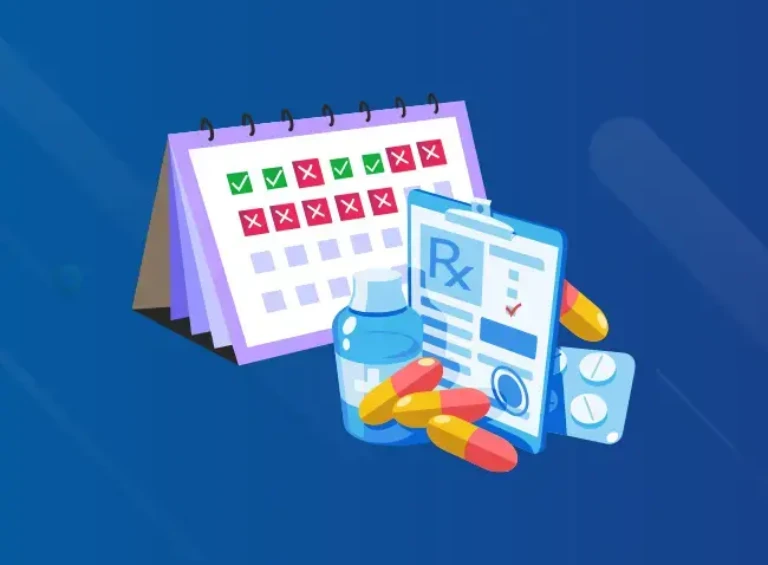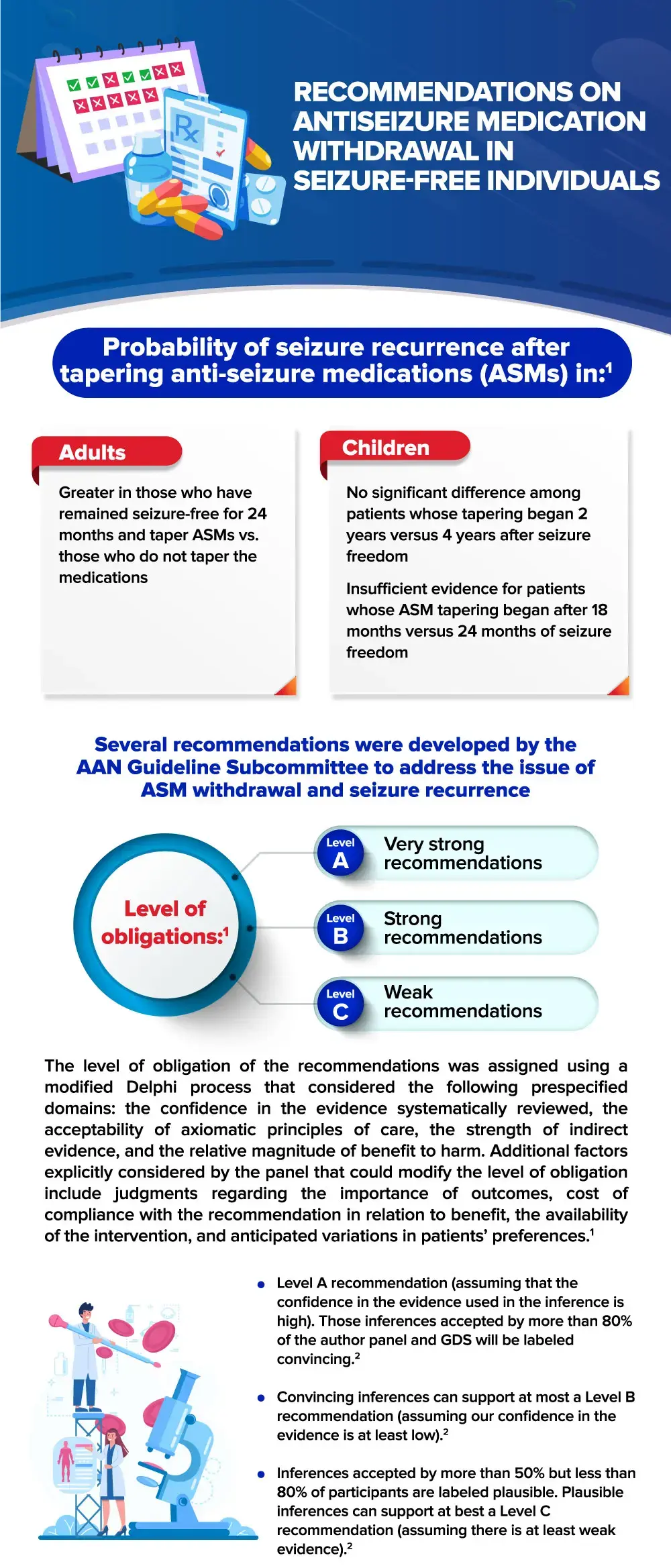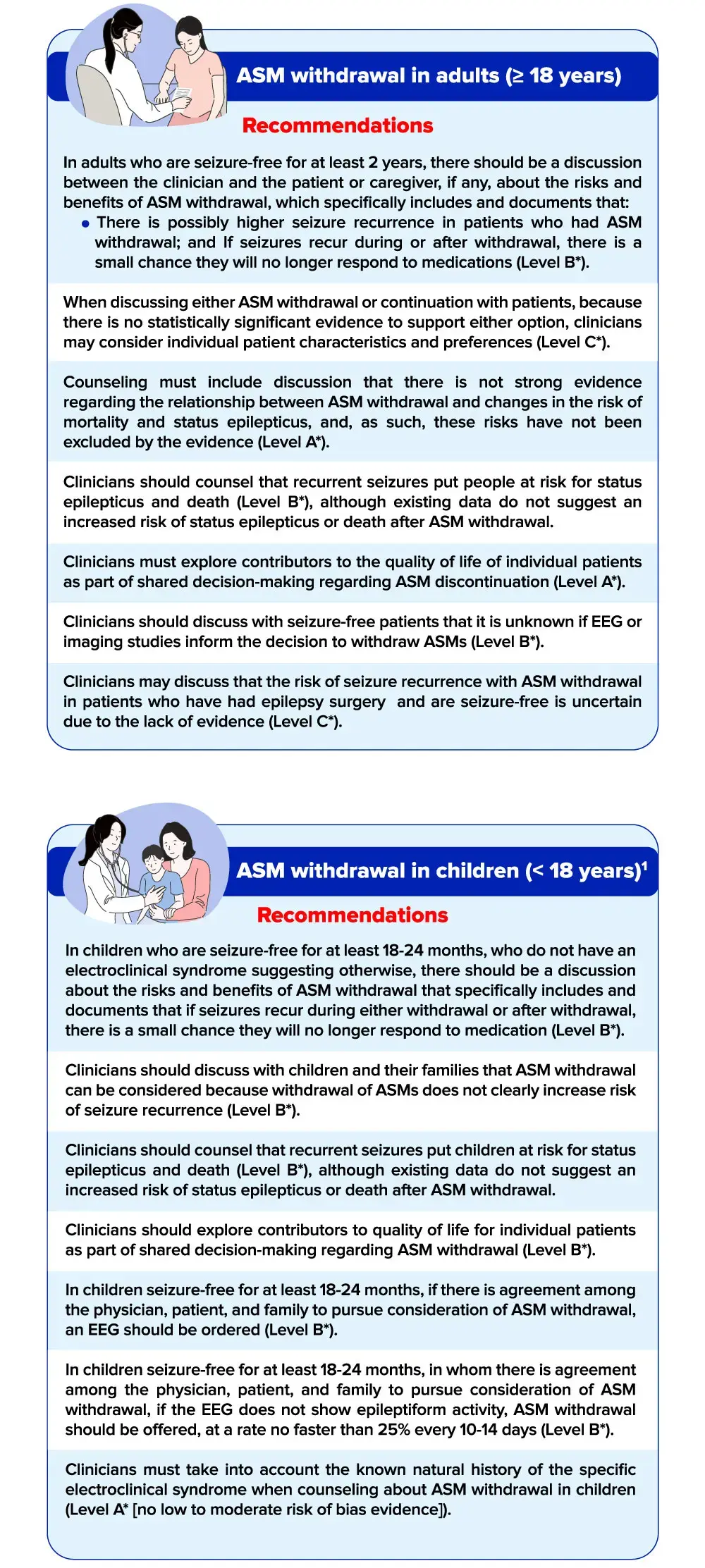Recommendations on antiseizure medication withdrawal in seizure free individuals

The long-term (24–60 months) risk of seizure recurrence is possibly higher among adults who have been seizure-free for 2 years and taper antiseizure medications (ASMs) vs those who do not taper ASMs (15% vs 7% per the 1 Class I article addressing this issue). In pediatric patients, there is probably no significant difference in seizure recurrence between those who begin tapering ASMs after 2 years vs 4 years of seizure freedom, and there is insufficient evidence of significant difference in risk of seizure recurrence between those who taper ASMs after 18 months of seizure freedom and those tapering after 24 months. ASM withdrawal possibly does not increase the risk of status epilepticus in adults. In seizure-free adults, ASM weaning possibly does not change quality of life.Withdrawal of ASMs at 25% every 10 days to 2 weeks is probably not significantly different fromwithdrawal at 25% every 2 months in children who are seizure-free in more than 4 years of follow-up.


ASM, antiseizure medication; AAN, American academy of neurology; EEG, electroencephalogram
- Gloss D, Pargeon K, Pack A, Varma J, French JA, Tolchin B, et al. Antiseizure medication withdrawal in seizure-free patients: practice advisory update summary: report of the aan guideline subcommittee. Neurology. 2021 Dec 7;97(23):1072-1081. Available at: https://n.neurology.org/content/neurology/97/23/1072.full.pdf.
- American Academy of Neurology. Clinical practice guideline process manual. St. Paul: The American academy of Neurology, 2011. Available at: https://www.san.com/steassets/home-page/policy-and-guidelines/guidelines/about-guidelines/11guidelinedevmanual v408 web.pdf.




